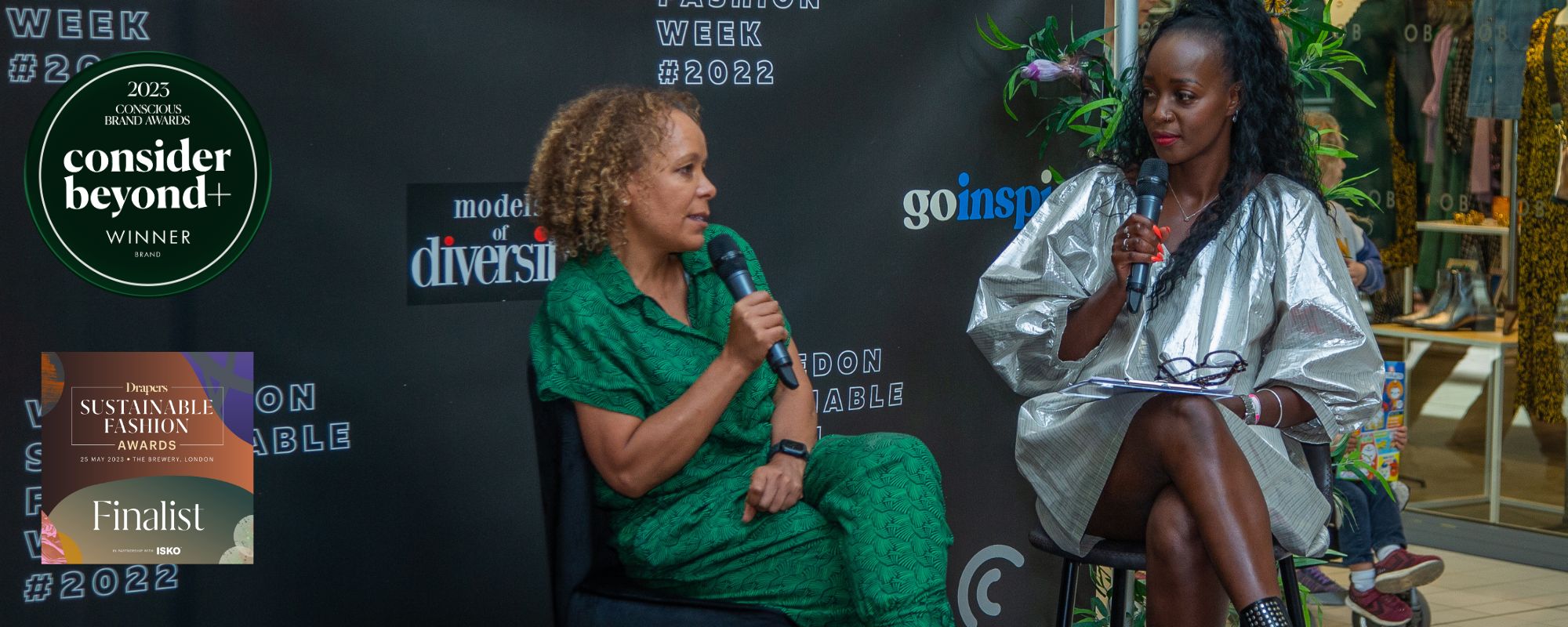
The Problem With Fast Fashion
So When Did Clothes Go From Being Durable... to Disposable?
Fast fashion is fading, and we’re thrilled to see it go.
For too long, our consumer choices have taken a toll on the natural world. Fashion- especially fast fashion -has been a major culprit. According to the Ellen MacArthur Foundation, the lifespan of our clothing has decreased by over a third in the last 15-20 years. Every second, the equivalent of a truckload of clothes is burned or buried in landfills. In the UK, only 4% of consumers exclusively buy from sustainable fashion brands (Statista).

But change is in the air. As scientists, environmentalists, and sustainability advocates raise alarms about our planet’s health, people are waking up. Recent data shows that 60% of consumers are becoming more conscious of where their clothes come from and the impact their purchases have on the environment (GlobalData). However, the gap between intention and action remains significant—many still struggle to break the cycle of fast fashion due to the convenience and affordability it offers. The big question is: Are brands ready to answer?
How Can Fashion Change?
We believe the shift must start within the fashion industry itself. By holding ourselves accountable for where and how we manufacture, source, and treat our makers, we can lead the change we wish to see.
The Rise of Fast Fashion - and Its Problems
In the early ‘90s, the term "fast fashion" was coined by the New York Times to describe Zara’s rapid turnaround from design to store—just 15 days. This set a new standard, and soon, the industry was on an unsustainable trajectory.
Fast forward to today, and we’re dealing with “ultra-fast fashion,” where styles are churned out at lightning speed and at dirt-cheap prices, feeding our appetite for constant consumption. This cycle - buy, wear, dispose - is hard to break, especially with the endless stream of new styles on social media and the convenience of online shopping. Data reveals that 88% of consumers feel overwhelmed by the amount of choice available, yet many still purchase due to fear of missing out on the latest trends (Mintel). The global fast fashion market is booming, expected to grow from $99 billion in 2022 to over $133 billion by 2026.
But there’s a human cost. Cheap clothes mean someone down the line is paying the price - exploited, underpaid workers facing inhumane conditions. It’s a side of fashion that can no longer be ignored.
Let’s Make Our Clothes Last
“If you try to create something people enjoy, and it happens to be made in a responsible way, then that's when you can really strike an incredible balance.” -Stella McCartney
At In Our Name, we’re all about long-term relationships - with our clothes and with the people who make them. One of the biggest issues with fast fashion is that the clothes simply don’t last. Cheap materials and rushed production mean that when a seam pops or a zip breaks, the garment is tossed out without a second thought.
It’s estimated that every second, a bin lorry’s worth of textiles is either burned or sent to landfills. As designer Stella McCartney points out, “Right now, less than 1% of material used to produce clothing is recycled into new clothing, meaning 99% of all textiles and fashion are waste… And that’s about $100 billion worth of materials wasted each year. It’s crazy!”
But waste isn’t just about quality. Style durability is key, too. Research shows the average item of clothing is only worn 14 times. In 2019, The Guardian reported that a third of young women considered an item old after just one or two wears.
Timeless design is essential. When clothing fits into your lifestyle, is versatile, and made to last, you’ll keep reaching for it. If you love it, you’ll wear it again and again.
A recent WRAP report highlights that designing for durability and longevity is the single largest opportunity the fashion industry has to reduce water waste, fabric waste, and the carbon footprint of our clothes.
Buy Less, Buy Better, Feel Great
This isn’t a doomsday lecture - it’s a celebration of choice. We all have the power to change the way we shop, to choose quality over quantity, and to consume mindfully. Clothes aren’t everything, but we know how transformative the right outfit can be. That perfect dress, the vibrant print that makes you smile, the cozy sweater you reach for every time.
At In Our Name, we create timeless collections that infuse joy into your wardrobe - pieces you’ll reach for time and time again. We're all about bold prints, wearable shapes, and high-quality craftsmanship, designed to make you feel amazing every time you wear them
So, choose wisely and join us in the slow fashion movement—celebrating clothes that not only make you look good but do good too. Let’s embrace a wardrobe filled with purpose, joy, and style that lasts

Want to read more about fast fashion? Here are a few links:



